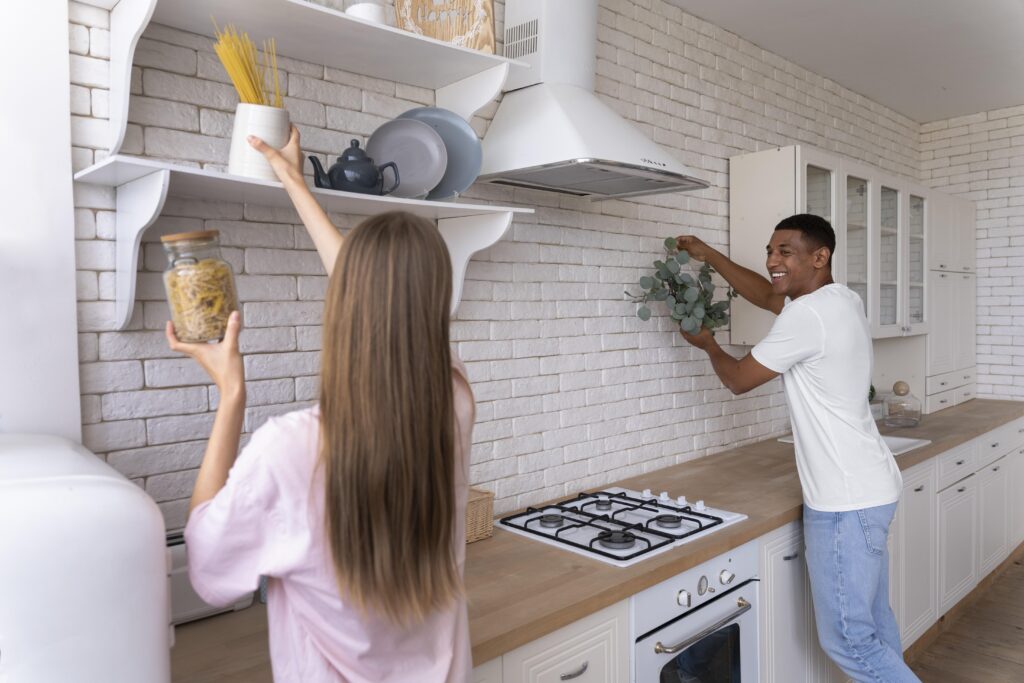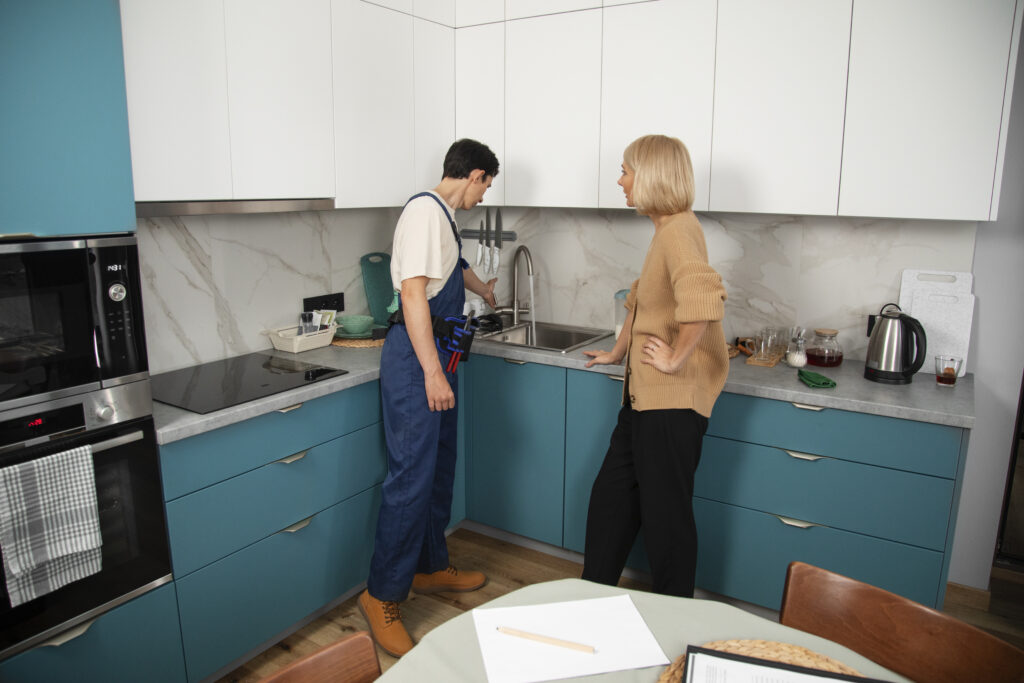A kitchen isn’t just a place to prepare food; it’s the central hub of modern home life. It’s where memories are made, families gather, and life happens. This is precisely why undertaking a kitchen remodel is one of the most exciting—and intimidating—projects a homeowner faces. The sheer volume of decisions, from setting a realistic budget to choosing the right contractor, can easily feel overwhelming.
My goal as a blogger is to simplify this complex process for you. This comprehensive guide provides the definitive blueprint you need to plan, design, and execute a high-value kitchen remodel, ensuring a smooth project from initial concept to the final, stunning transformation. Let’s make your dream kitchen a stress-free reality.
Phase 1: Strategic Planning and Financial Foundations
The success of any kitchen remodel starts long before demolition. Strategic planning ensures your project stays on time and within budget.
Set a Realistic Kitchen Renovation Budget
The cost of a kitchen remodel can vary drastically based on your desired scope. A common rule of thumb suggests spending 5% to 15% of your home’s total value.
- Allocate Funds Wisely (The 10-30-50 Rule): Generally, allocate roughly 10% to appliances, 30% to materials (countertops, flooring, tile), and the remaining 50% to professional labor, cabinetry, and design services.
- The Critical Contingency Fund: Always earmark 15% to 20% of your total budget for unforeseen complications, such as plumbing or electrical issues discovered during demolition. This is the difference between a smooth project and a stressful one.
- Prioritize Investment Areas: Decide whether the highest quality cabinets or premium appliances are your priority, as you may need to adjust other material choices to balance the budget.
Define Your Kitchen’s Core Functionality and Design Style
Your new kitchen must cater to your specific lifestyle. Define your goals for the space using high-intent keywords that match search queries.
- Determine Work Zones: Consider zoning your space for specific tasks: a prep zone, a cooking zone, a cleaning zone, and a social/eating zone. This optimizes the flow and efficiency, far surpassing the traditional work triangle approach.
- Choose a Lasting Style: Research popular aesthetics that align with your home’s architecture. Are you seeking a sleek modern kitchen design, a cozy farmhouse kitchen remodel, or a timeless traditional kitchen? Using Pinterest and Houzz to create an inspiration board is highly recommended.

Phase 2: Design Execution and Material Selection
Once the plan and budget are solid, attention turns to the physical elements that define the space and its durability.
Optimizing Your Kitchen Layout for Maximum Efficiency
The right layout maximizes space, improves workflow, and can significantly increase your home’s value. Our design experts specialize in these high-efficiency layouts:
- L-Shape and U-Shape Layouts: Ideal for maximizing counter space and allowing multiple people to move freely.
- Galley Kitchen Designs: Perfect for smaller or narrow spaces, offering maximum efficiency with minimal steps between counters.
- Kitchen Island Integration: A custom island serves as a social center, provides crucial extra storage, and often houses a secondary sink or cooktop.
Selecting High-Durability Materials and Finishes
Choosing materials means balancing aesthetic appeal with the ability to withstand daily use. Focus on materials known for longevity and a strong return on investment (ROI).
- Cabinetry: The Core Investment: Cabinets define both the look and storage capacity. Options range from cost-effective stock cabinets to tailored semi-custom and fully specialized custom cabinetry. Always select durable finishes resistant to moisture and grease.
- Countertop Materials: Quartz is popular for its low-maintenance and non-porous surface. Granite offers unique natural beauty and heat resistance. We guide clients on the best choice based on their maintenance preference and budget.
- Flooring and Backsplash: Select flooring that complements the kitchen’s heavy use, such as durable large-format tile or high-quality LVP. The backsplash offers a perfect opportunity to introduce color, pattern, or texture without overcommitting.
Choosing Energy-Efficient Appliances
Appliances are an immediate way to upgrade your kitchen’s functionality. Look for ENERGY STAR® certified appliances to lower utility costs over time.
- Refrigeration: Consider counter-depth models for a built-in, seamless look, or specialized drawer refrigerators for convenience.
- Cooking: Induction cooktops are growing in popularity for their speed and safety, while high-capacity wall ovens are essential for serious bakers and entertainers.
Phase 3: Partnering and Execution
The final and most crucial phase is selecting the right renovation contractor to ensure expert execution.
Vetting and Hiring Your Renovation Partner
Don’t settle for the lowest bid; prioritize reliability, expertise, and a proven track record, especially in specialized areas like kitchen plumbing and electrical work.
- Verify Credentials: Ensure your contractor is fully licensed, bonded, and insured in [Your Service Area/State]. Request proof of liability and worker’s compensation insurance.
- Review Portfolios and Testimonials: Ask to see recent examples of full kitchen remodels and speak with past clients to gauge their satisfaction with project management and communication.
- Obtain a Detailed Contract: Your contract must include a clear scope of work, a fixed payment schedule tied to milestones, and a guaranteed project completion date. This protects both parties.
FAQs
How long does a typical kitchen renovation project take from start to finish?
A comprehensive kitchen remodel usually takes between 8 to 14 weeks, depending on the extent of structural changes and how quickly custom materials are delivered.
How much should I budget for a kitchen remodel?
For a mid-range renovation, homeowners often spend between 5% and 15% of their home’s total value. Always include an extra 10-20% as a contingency fund for unexpected costs.
What is the “Kitchen Work Triangle”?
The work triangle is a classic design principle that strategically connects the three main work areas: the sink, the stove, and the refrigerator. Its goal is to create an efficient and comfortable flow for the primary cook.
Which countertops offer the best return on investment (ROI)?
Durable, popular materials like quartz and granite consistently offer high ROI, appealing to future buyers. Choose a timeless, neutral color to maximize its long-term value.
Should I hire a contractor or manage the renovation myself?
Hiring a licensed contractor is recommended for complex structural, plumbing, or electrical work. They manage the timeline, permits, and subcontractors, saving you significant time and stress.




Pingback: The Amazing Bathroom Remodel: Costs, Tips & Design 2026
Pingback: Essential Cozy Living Room Renovation Ideas
Pingback: 19 Budget-Friendly Home Renovation Ideas for Every Room
Pingback: Top 10 Kitchen Remodel Trends for 2026